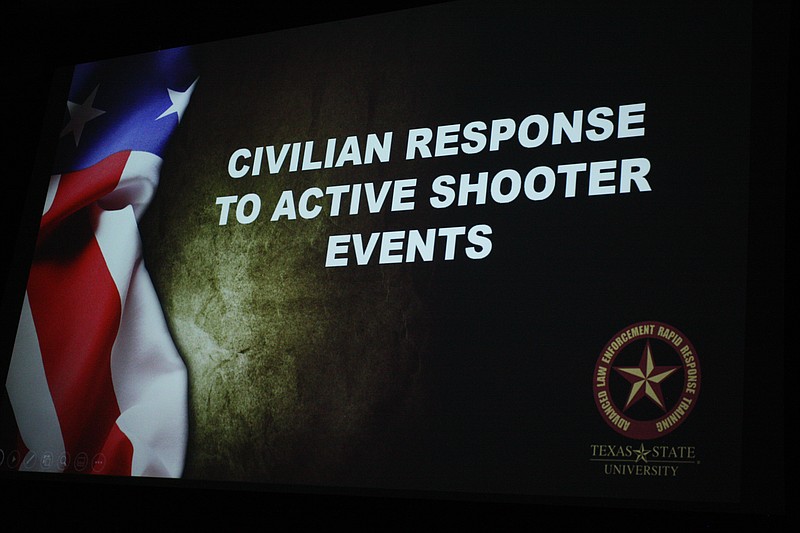TEXARKANA, Texas — Texas A&M University-Texarkana Police Chief Alexander Serrano on Wednesday led a training on how to respond to an active shooter event.
“This course was developed for law enforcement officers to have a system for how they respond,” Serrano said at Eagle Hall. “Now, the course is not only developed for law enforcement but for you, the community.”
Serrano said community involvement is important in each step of preventing a deadly shooting event.
-----
Answer a related Daily Poll question at texarkanagazette.com/news/polls
-----
“Some of these (shooters) broadcast their ideas,” Serrano said. “They start putting stuff on Facebook, Instagram, showing their guns and saying that someone is going to get it today.”
Serrano cited an instance that took place the day after the school shooting in Uvalde, when police intercepted a potential shooter and arrested them due to suspicious social media posting. He urged attendees to alert police if they see or hear something out of place.
For the course, Serrano used dispatch and media materials from the Columbine and Sandy Hook shootings and various commercial store shootings to provide examples of what to do and not do in an active shooter event. His advice could be summarized in three words — Avoid, Deny, Defend.
In the context of being prepared for an active shooter, Avoid is the effort to get as far away from the threat as possible.
“You have a few seconds to make a decision (when you hear a gunshot),” Serrano said after an audio clip of gunshots echoed through the room. “You should look around, try to realize what’s going on, and make a plan to survive.”
Serrano advocated for knowing an exit strategy outside of the normal avenues.
“Everyone will be going for the main front doors. Go for a different door; use a window if you have to.”
If it’s not possible to get away, Serrano said a person should Deny, that is, to hide one’s presence from the shooter.
“A teacher at Sandy Hook went into immediate Deny mode,” Serrano said. “She pushed over a bookcase by the door, remained calm and kept her kids calm.”
The final step is to Defend.
“Now that guy has come through the door, we have got to fight.”
Serrano said he could not fully recommend hiding or playing dead in the case of an active shooter threat. In a video clip, a survivor of the Virginia Tech shooting described how she hid with her classmates and slowed her breathing while the shooter came to her classroom three times, killing himself after his third entrance.
“She got shot twice in the lung and nicked her liver,” Serrano said. “She survived, she got lucky.”
Serrano said those who are concealed carriers should remember that first responders are human.
“My adrenaline is going to be up, my hand might shake, my heart rate will be up too,” Serrano said. “If I come in the room and you have a gun and I’m looking for an active shooter, you’re going to be considered a threat.”
The carrier should immediately holster or put away the weapon, raise his or her hands and officers what happened.
The CRASE training was born from necessity, Serrano said.
“People had concerns (after the Uvalde shooting), so I decided to add as many trainings as I could to the calendar to provide everyone an opportunity to hear this.”
The next training is from 9 a.m. to 10:30 a.m. Wednesday, July 27 at A&M’s Eagle Hall. Preregistration is not required but is recommended for large groups and can be made by emailing [email protected].

